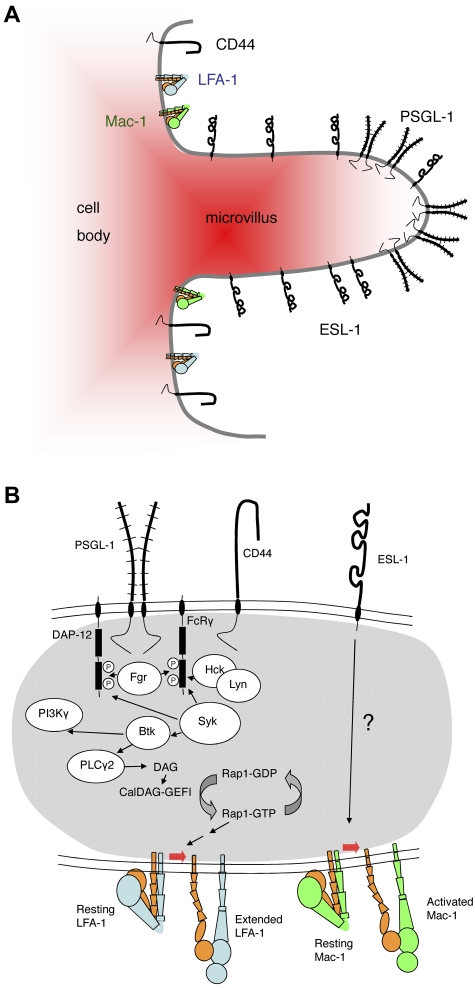Figure 1.
Topography and signaling pathways triggered by selectin ligands in neutrophils. (A) Topography of selectin ligands on neutrophils. Based on biochemical and electron microscopic evidence, PSGL-1 is thought to be concentrated in lipid rafts on the tips of microvilli.13 Electron microscopy places (some of) ESL-1 on microvilli, but not necessarily the tips,69 whereas CD44 is concentrated in the valleys between microvilli.86 LFA-1 and Mac-1 are thought to be mostly on the cell body. (B) Signaling pathways of selectin ligands in neutrophils. Engagement of PSGL-1 by P-selectin or E-selectin or engagement of CD44 by E-selectin induces activation of the SFKs Fgr, Hck, and Lyn.40,82 The activated SFKs phosphorylate the ITAM domains of DAP-12 and FcRγ, enabling them to recruit spleen tyrosine kinase Syk.82 Knocking out Fgr or knocking out both Hck and Lyn blocks this signaling pathway.40,82 Direct physical association between PSGL-1, CD44, and the SFKs has not been demonstrated. Syk activity is needed to activate Bruton tyrosine kinase (Btk), which leads to phospholipase C-γ2 (PLCγ2) activation, providing diacylglycerol (DAG) for the activation of CalDAG-GEFI, an exchange factor for the small G protein Rap-1.84 Rap-1 drives LFA-1 extension through other signaling intermediates (not shown). Engagement of ESL-1 by E-selectin has been shown to activate Mac-1,85 but the signaling pathway is unknown.

